Digital marketing for restaurants has never been more important. Every industry today needs digital marketing, but it’s especially vital in the hospitality sector. As technology has evolved and consumer habits have changed, digital marketing has changed, too, with new platforms and techniques emerging all the time. In this article, you’ll discover the secrets of digital marketing and how it can work for your restaurant business.
Table of Contents:
- What Is the Restaurant Industry?
- Why Is It Important to Follow Restaurant Marketing Trends?
- Digital Marketing for Restaurants Trends in 2025
- Personalization
- Google Business Presence
- Search Engine Optimization for Locals
- Reputation Management
- Social Media Marketing
- Your Website & SEO
- Utilize Paid Advertising
- Email Marketing
- Review Impact
- Restaurant Chatbots
- Make Use of ChatGPT
- Customer Loyalty Programs
- Online Ordering
- QR Menus
- Performance Analysis
- Influencer Marketing
- Strategies for Community Engagement
- Video Content for Restaurant Marketing
- User-Generated Content Strategies
- Using Wi-Fi for Restaurant Marketing
- Restaurant Technology Influencing Digital Marketing Trends
- Staffing Shortages: How Technology Can Help
- Restaurant Management Software
What Is the Restaurant Industry?
The restaurant industry is part of the wider hospitality industry. It’s one of the largest sectors. The restaurant industry consists of businesses offering food services for consumers eating on the premises. The industry covers various businesses, from fast food restaurants and diners to fine dining and gourmet restaurants. According to the Food Service Industry Research Report by Statista, the market size of the global food service industry is projected to be $4.43 trillion in 2028. No matter what type of food a restaurant serves or the clientele it hopes to attract, digital marketing is increasingly important.
Even small pop-up cafés need to stay on top of the restaurant digital marketing trend. A restaurant, meaning any business that serves food to customers for consumption on-site, relies greatly on its reputation and potential customers knowing where to find it. With digital marketing, restaurant businesses can reach more customers and manage their reputations more effectively. Read “Restaurant Industry: Overview, Types, Examples and More“ to learn more.
Why Is It Important to Follow Restaurant Marketing Trends?
Digital marketing for restaurants has never been more critical. After the dark days of the pandemic, the demand for in-person services is rising again. On the other hand, new challenges have emerged: staffing shortages affect the hospitality industry, while supply chain disruption and rising costs are hitting the restaurant industry especially hard. In this dynamic landscape, restaurateurs find new and innovative ways to market their services.
More and more businesses are choosing to go online in response to growing consumer confidence in, and demand for, mobile and web-based services. As well as making it easier for customers to discover restaurants they’ll love, this also means that restaurant businesses can garner essential data about their customers and the industry at large. Staying on top of current restaurant marketing trends is more vital than ever. It’s also much easier. Social media marketing, video marketing, and other new approaches can boost revenue and grow your business fast.
Digital Marketing for Restaurants Trends in 2025
This section will uncover some of today’s restaurant business’s most important digital marketing trends.
Personalization
One of the top digital marketing trends is personalization. Personalization can greatly affect how a customer feels about a business. The hospitality industry as a whole relies on providing a positive customer experience. This is especially true for restaurants, meaning personalization has an important role. Whether the customer is dining out in person or ordering food for delivery online, it’s always a better experience if there’s some attention to detail.
Even something as simple as a friendly greeting by name when a customer logs on to their restaurant account can leave them with a more favorable impression. In person, it’s always nice for customers to be remembered from a previous visit and have their preferences noted. Online personalization can include more finely targeted marketing, recommendations based on previous choices, and the kinds of loyalty programs discussed earlier.
Google Business Presence
Google is still the king of search engines – according to Statcounter, the Search Engine Market Share Worldwide Report shows Google to have a market share of 91.4% in January of 2024. Digital marketing for restaurants means harnessing the power of Google to develop your visibility online. This is particularly important for local businesses that don’t have the kind of brand recognition that national chains enjoy. Google offers a free tool called My Business that can help with this. You’ll need to register your business website with Google, then use My Business to add your restaurant’s location, hours of operation, and other details that customers need.
You can also add photos and images. Your restaurant will also appear on Google Maps when customers look at your area. Google My Business also lets customers leave reviews and comments, allowing you to receive feedback and engage with your guests. Optimizing Google My Business is a fast and simple way to ensure that as many potential guests know about it as possible.
Video: How To Set Up & Optimize Restaurant Google My Business For Maximum Exposure
Search Engine Optimization for Locals
Local search engine optimization is the process of optimizing your website and social media channels for people searching in the local area. This allows you to boost your ranking on relevant search engine results pages. With more than half of all searches now originating from mobile, local search is more important than ever. By focusing on local SEO, you can generate more interest from people searching on a mobile, using location tracking.
Local SEO is a key part of digital marketing for restaurants and can include targeting keywords that include local place names, or optimizing business listings across your website, social media and Google ‘My Business’ page. You also want to make sure your restaurant appears on Google Maps and similar services.
Reputation Management
Reputation management involves taking steps to optimize your business’ reputation using online platforms. This can include dedicated restaurant review platforms, food ordering apps and social media platforms. One of the most important components of digital marketing for restaurants because an online reputation can determine whether people visit. Many modern customers will check online reviews before making a table reservation.
You can manage your restaurant’s reputation by providing excellent service and encouraging guests to leave online reviews. You may even be able to offer incentives to generate more feedback. When you do have negative reviews, respond carefully, take genuine criticism on board, and try to make amends.
Social Media Marketing
Social media has transformed the marketing landscape. Digital marketing for restaurants and social media are the perfect match. By developing a positive and responsive relationship with your customer base, you can win many more customers than a business that doesn’t. According to Forbes magazine, 71 percent of those polled would recommend a restaurant with an active and engaged social media presence. Ideally, you should set up pages for all your locations on the biggest social media platforms: Facebook, Instagram, Twitter, TikTok, YouTube, etc.
That way, you can provide information, show your restaurant off to its best advantage, and give your customers a space to leave feedback. Customers will certainly discuss your restaurant, the food, the service, and every detail of their experience on their social media accounts. Potential future customers will be looking at the images they post and reading their comments. Maintaining an active social media presence allows you to control your restaurant’s reputation.
Video: How restaurants can create content for TIK TOK
Your Website & SEO
Digital marketing for restaurants requires a good grasp of the principles of search engine optimization (SEO). When your guests search for restaurants like yours in the area, you must ensure that your business is on the front page. As well as ensuring that your main webpage is engaging and provides value in the form of helpful information about your restaurant, it would help if you also made sure that it is evident to search engines and will show up near the top of the search results as soon as possible.
While populating your website with valuable menus, times, and booking details and ensuring a cohesive brand identity, you must also make your website content search-friendly. Research the keyword phrases your guests will be looking for and include these in your site’s text and image identification. Provide fresh, original, entertaining, and compelling content for visitors. Local directories that can link to your page will also boost rankings.
Utilize Paid Advertising
The restaurant industry is highly competitive, making digital marketing for restaurants especially challenging. One of the ways you can stand out from rivals and achieve the necessary cut-through is by implementing a high-quality paid advertising strategy, using platforms like Google Ads, Facebook, Instagram, and Microsoft Advertising.
Google Ads is beneficial for achieving visibility on results pages for high-value search terms through a pay-per-click model. It also provides access to non-search websites, mobile apps, and YouTube. Meanwhile, Facebook and other social media platforms are perfect for targeting very specific demographics. Another advantage associated with paid ads is the amount of performance data you can gather, allowing you to optimize your campaigns over time.
Table: Paid Advertising Formats, Descriptions & Examples
Email Marketing
Don’t underestimate the power of old-school email in restaurant digital marketing. Email marketing can effectively reach new customers and retain existing ones. The key is personalizing your marketing emails to be relevant to the recipient. Nobody likes to receive generic bulk emails irrelevant to their interests or needs. Conversely, most people are happy to get news and offers that are useful to them. If a customer has previously ordered pizza at your restaurant, they might be interested in special deals on pizza.
You can also set up your system to send messages to individual customers on their birthdays, anniversaries, or other important dates. A CRM (customer relationship management) system enables you to collect information about your guests — names, contact details, what they’ve ordered in the past, their preferences, etc. This lets you analyze and classify customer segments to fine-tune your email campaigns.
Review Impact
Reviews are tremendously critical in digital marketing for restaurants. While word-of-mouth retains a significant impact, more and more people trust online reviews as much as they trust recommendations from friends or family. According to recent data, 84 percent of people trust online reviews. People increasingly look for reviews online before trying a new service or product. Because restaurant dining is primarily a leisure activity, people are more selective and will seek out the businesses with the most positive feedback.
Good reviews also improve your restaurant’s search engine ranking, meaning more people are likely to find your website when looking for dining options in your area. Customers use Google, social media, and review sites like Yelp to find reviews. It’s essential to engage with reviews, both good and bad. Customers like to receive thanks for a good review, while a polite and respectful response can offset the negative impact of a bad one.
Restaurant Chatbots
Without a section on restaurant chatbots, no digital restaurant marketing discussion would be complete. AI chatbots have become highly sophisticated in recent years, and their use has increased across all hospitality industry sectors. A restaurant chatbot is a software application that uses artificial intelligence and machine learning to replicate a human operator. They can answer common questions, provide information, and direct customers to their needed services.
Chatbots can handle reservations, take food orders, and provide live customer support when staff is unavailable. They can promote special offers, suggest items, and upsell as guests place orders. Chatbots can also ask questions and be used as part of a reputation management strategy. Restaurant chatbots have a significant role in the industry, saving businesses and customers money and time while allowing restaurants to offer customer service around the clock. To learn more, read “Restaurant Chatbots: What Are They, Their Use and Benefits”.
Video: A 2-Minute Look at a Restaurant Chatbot
Make Use of ChatGPT
Artificial intelligence is fundamentally altering how digital marketing for restaurants works, and ChatGPT is a great example. The AI tool can be used for everything from automating responses to customers to making personalized recommendations and even providing multi-language communication options.
In the “ChatGPT Hospitality Guide: How ChatGPT Can Help the Hospitality Industry“ guide, you can learn much more about ChatGPT and its benefits so that you can improve your marketing strategy and boost customer satisfaction.
Customer Loyalty Programs
In the restaurant industry, it’s not enough to attract new customers. You need to retain existing customers as well. If you can encourage customers to keep returning for more, you won’t need to reach as many new customers as possible to attain the same value over time. Because they target participants who have already opted in by dining at your restaurant, customer loyalty programs are powerful tools in digital marketing for restaurants.
You can convert one-time visitors into repeat customers, occasional visitors to frequent visitors, and boost your per-person average spend. You can use the information the customer provides to them with offers, coupons, and updates on your menu. You can improve your bottom line and ensure a more stable revenue stream by engaging with your guests and encouraging them to return. In place of old-school loyalty cards, you can use a loyalty app or even integrate your loyalty program into restaurant POS systems.
Online Ordering
Digital restaurant marketing can fail if you don’t give your customers a quick and easy way to act on the information they receive about your restaurant. Online ordering is increasingly vital in this digital age. Even if you don’t deliver food, online ordering lets customers select food for pick-up or plan their orders before they arrive at your premises. Letting customers order food through their phones from their tables saves time and reduces errors and disappointment.
Today’s customers want a seamless experience with an easy-to-use interface. There should be a detailed breakdown of your restaurant’s delivery service and an order button that’s easy to see. Customers will appreciate it if you have a simple order page where they can add selected items to an online cart, apply coupon codes or other discounts, and check out with their preferred payment method.
Video: Online Ordering Demo
QR Menus
QR codes are black-and-white squares that encode digital information. While they’re less popular than once, QR codes remain essential in restaurant digital marketing. An entire menu and other information can be encoded into a QR code. Alternatively, they can encode a URL to read a menu online. Diners can scan these codes with their mobile phones, immediately open a menu, and see what’s available.
They’re a great option for marketing as they can be displayed anywhere. QR codes can also be ideal for restaurants that get busy and need to provide speedy service without overworking employees. QR menus also make ideal tools for upselling since they can be used to automate menus and suggestions. QR code menus make it very easy to amend menus, add new items or refresh the branding without the need to pay for printing a whole batch of replacement menus every time.
Video: QR Menu and Quick Ordering System
Performance Analysis
Successful digital marketing for restaurants requires regular and thorough analysis and development. You can follow every restaurant’s digital marketing trend, set up a presence on all the most popular social media platforms, and create viral video marketing and email campaigns, but unless you keep a close eye on what works and what doesn’t, you could be wasting your money and time.
This means learning to make good use of analytics tools so that you can fine-tune your campaigns and focus on the most effective elements. Luckily, there are plenty of tools available. As well as Google Analytics and Google Search Console, you should also use the many performance tools offered by social media platforms. These will let you see how well your various campaigns perform, which platforms are the best for you, and which content your customers prefer.
Influencer Marketing
Influencer marketing involves working with people who have a significant following on social media, in order to promote your restaurant. The influencer effectively endorses your restaurant and promotes it to their followers. In the age of social media, influencer marketing is important for maximizing reach. Many people will trust the word of a social media influencer, as they are often seen as experts, thought leaders or role models.
Influencers can assist digital marketing for restaurants in a number of ways, including posting a review, sharing images of themselves at the restaurant or providing behind-the-scenes content for their social media followers. When used effectively, this form of marketing allows your restaurant to benefit from the influencer’s established rapport with their audience. Restaurants should select influencers carefully, based on the demographics they reach.
Video: A Guide to Using Influencer Marketing for Your Restaurant
Strategies for Community Engagement
Community engagement is a marketing strategy that involves making meaningful connections with people in the nearby area. In the digital space, this often occurs across social media platforms. Community engagement is about mutual benefits. By becoming an integral part of the community and helping other people, a restaurant can generate goodwill, enhance its reputation, attract more business, and boost customer loyalty.
Examples of community engagement strategies that can form part of digital marketing for restaurants include promoting local causes on social media, running competitions and building positive relationships with other businesses. In response, restaurants are often able to benefit from increased word-of-mouth promotion.
Video Content for Restaurant Marketing
Video content can play a valuable role in digital marketing for restaurants, especially on platforms like YouTube, Instagram and Facebook. Video content includes advertisements, short-form video content, and long-form video content. This content can generate high engagement rates and is easy to consume on a computer, tablet, or smartphone. Video also allows you to combine audio and visual stimulation to create more exciting, memorable marketing content.
Some examples of video content that can be used to great effect by restaurants include videos of meals being prepared, a behind-the-scenes look at the kitchen, or videos sharing the opinions of customers. You can use video content to inform and entertain your target audience, while also promoting your services.
Video: 3 Best Restaurant Marketing Ideas for 2025 (with AI Strategies)
User-Generated Content Strategies
User-generated content describes content created by ordinary users, rather than by your business. This includes online reviews, testimonials, photographs taken by restaurant customers and competition entries. One of the reasons user-generated content is so valuable is because it is considered to be more authentic than your own marketing. When your customers create great content, it serves as social proof of the quality of your restaurant.
Restaurants should try to find ways to encourage relevant user-generated content. In terms of digital marketing for restaurants, possible ideas include photography competitions or creating an engaging hashtag. Get creative and consider combining some of these concepts. For instance, what about running a competition, where you ask people to provide ideas for a new menu item, using a hashtag to keep all of the entries in one place?
Using Wi-Fi for Restaurant Marketing
Wi-Fi in the restaurant can also be used as a form of digital marketing for restaurants. By ensuring guests have a reliable internet connection, you can use online communication to reach them during their visit. Providing high-quality Wi-Fi is important because people now expect to have internet access at all times. This connectivity can also enable you to collect useful customer data and use it for marketing.
Some of the ways you can make effective use of Wi-Fi in marketing include providing personalized recommendations in your app, or providing special offers that are most likely to appeal to individuals, based on past purchases. A growing number of restaurants are using self-service online ordering systems. This provides multiple benefits, including allowing you to access customer data and providing you with upselling opportunities.
Restaurant Technology Influencing Digital Marketing Trends
Technology in the restaurant industry is constantly evolving. New concepts, systems, and devices always come on the market. Running a restaurant business successfully means making effective use of the right technology. It can be difficult to decide which technology to adopt, however.
In “Latest Restaurant Technology Trends You Need to Know About”, you’ll learn about all the most recent developments in restaurant technology and what they mean for you. Discover how virtual reality can help market your business, how QR codes and contactless payments can make life easier, and more.
Staffing Shortages: How Technology Can Help
The hospitality industry has been hit hard by staffing shortages in recent years. A short-staffed hotel or restaurant faces challenges; low staffing levels can impair the quality of service that a business can provide. Intelligent investment in technological solutions can take the pressure off your staff and make the customer’s experience more pleasant.
Technology like contactless check-in, restaurant e-commerce, AI chatbots, and cleaning robots can help to resolve short-staffing and make life easier for your existing employees. To learn more, read “How to Solve Staffing Shortages in the Hospitality Industry with Technology”.
Restaurant Management Software
Restaurant management software can offer major improvements in efficiency and customer satisfaction, as well as streamline the overall operation of your restaurant. With a large and ever-growing range of software, it can be tough to determine exactly which systems are right for your business.
In “Restaurant Management Software: A Complete Overview”, you’ll learn about the software available, what essential operations it can help with, and how to choose the best software for your needs. You’ll discover how software can improve customer service, reduce costs, increase revenue, and more.
Digital Marketing for Restaurants FAQs
Digital marketing for restaurants is increasingly important, especially for smaller local businesses that don’t have national brand recognition. Digital marketing needs to be effectively targeted and personalized to your customer base. Analysis and review of marketing strategies are important to ensure success.
Did You Like This Article About Digital Marketing for Restaurants?
You might also be interested in the following articles:
- Choosing the Right Target Market for a Restaurant To Ensure Success
- POS Software for Hospitality: A Deep-Dive into Reporting Features
- Marketing Strategy for Restaurants: How to Succeed
- Social Media Marketing for Restaurants: Best Practices
- Restaurant Advertising Trends You Should Know About
More Tips to Grow Your Business
Revfine.com is the leading knowledge platform for the hospitality and travel industry. Professionals use our insights, strategies, and actionable tips to get inspired, optimize revenue, innovate processes, and improve customer experience.Explore expert advice on management, marketing, revenue management, operations, software, and technology in our dedicated Hotel, Hospitality, and Travel & Tourism categories.
This article is written by:
Hi, I am Martijn Barten, founder of Revfine.com. With 20 years of experience in the hospitality industry, I specialize in optimizing revenue by combining revenue management with marketing strategies. I have successfully developed, implemented, and managed revenue management and marketing strategies for individual properties and multi-property portfolios.

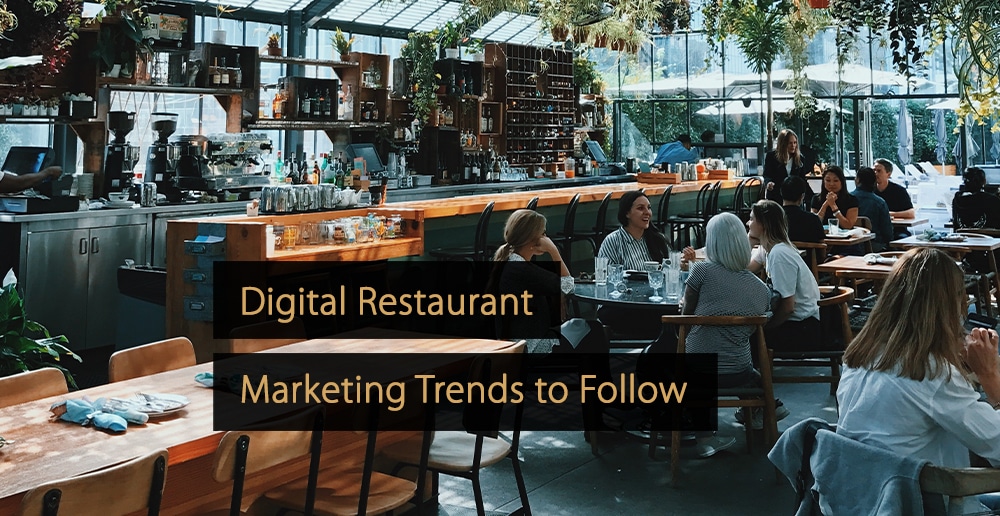

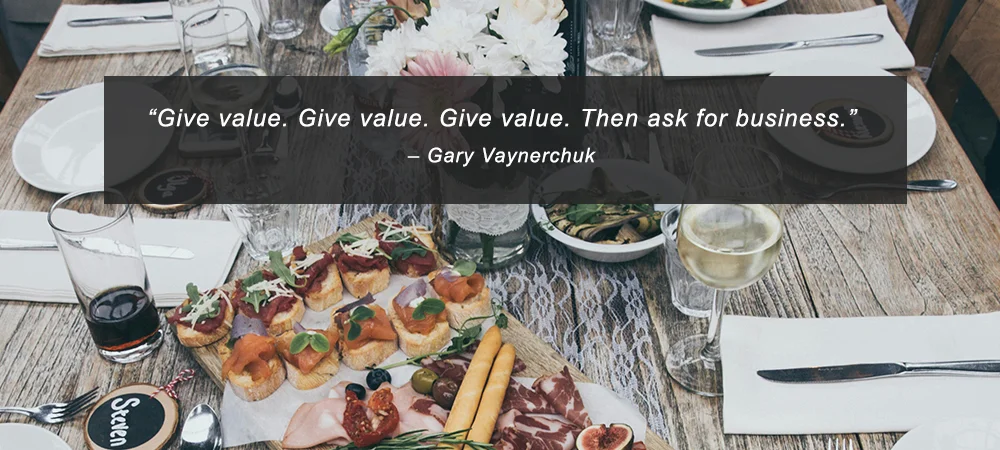


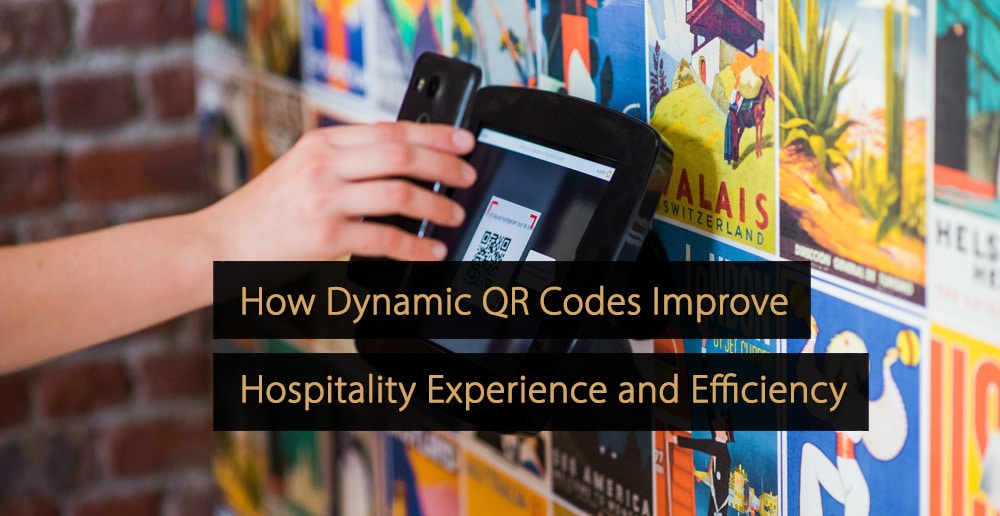
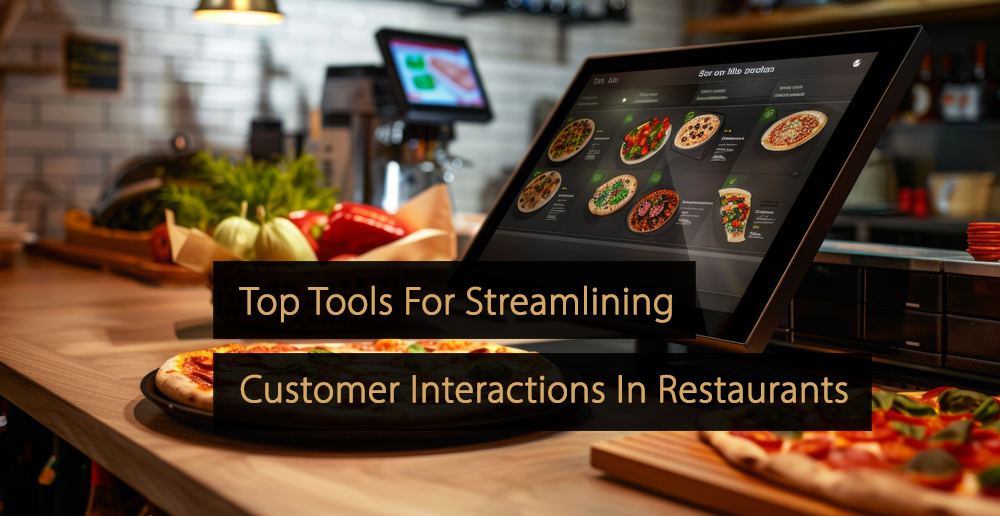
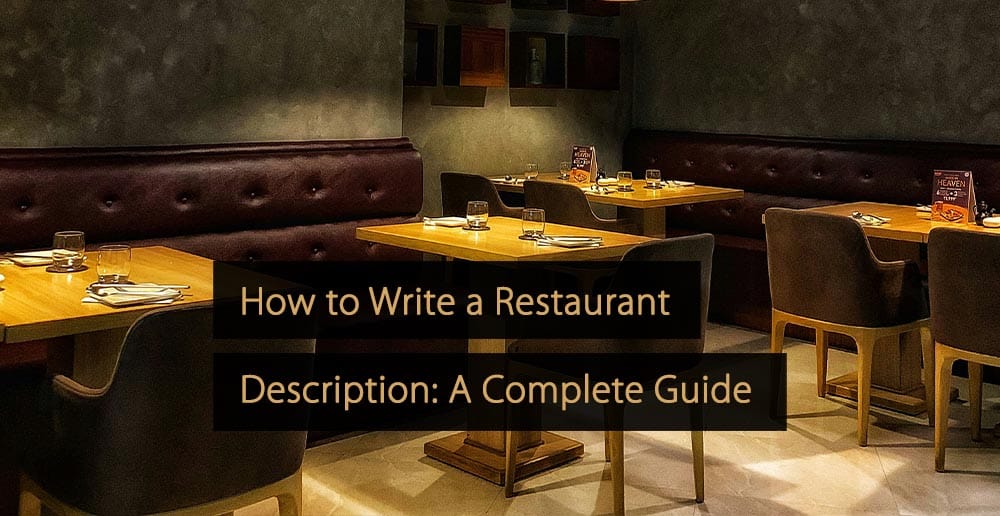
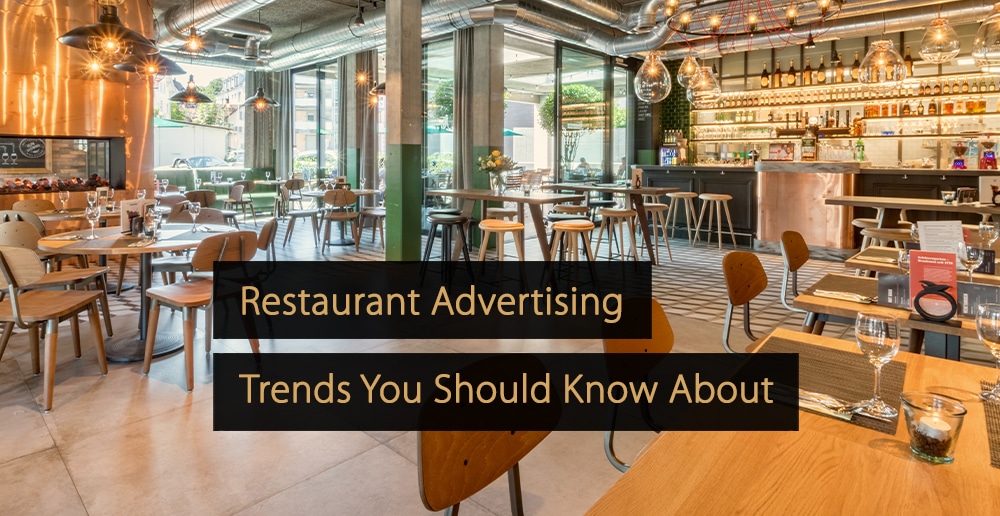
Hey, thank you for piling up these digital marketing trends for restaurants. The tips are very practical and easy to implement. thanks.